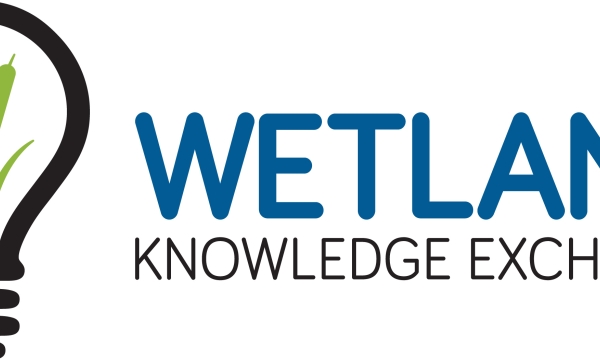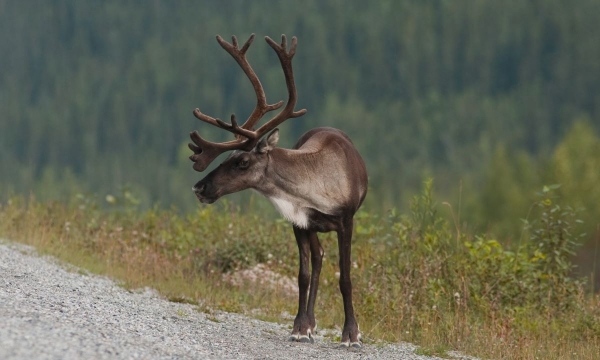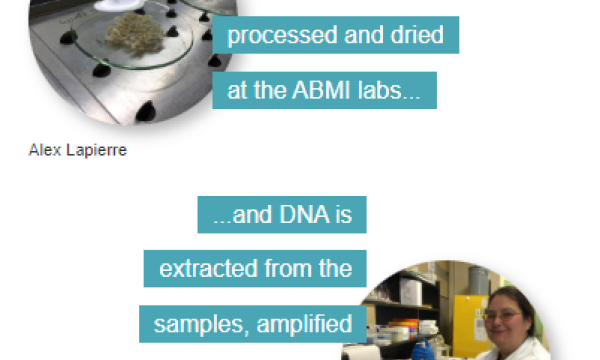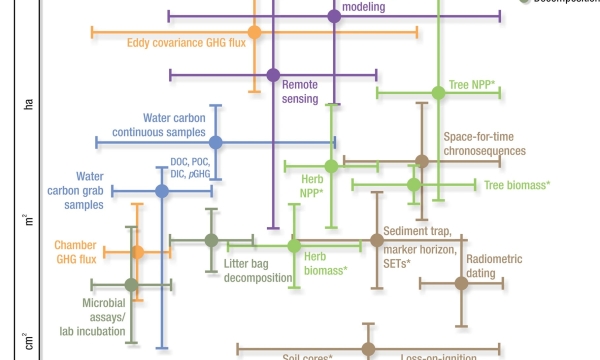Ressources de connaissances sur les terres humides
Ressource
The Wetland Knowledge Exchange releases monthly newsletters that highlight new research, publications, news, events and more. In this edition you will learn about: Techniques for measuring carbon in...
Ressource
Auteurs
Dylan Fraser
Thomas Coon
Michael Prince
Rene Dion
Louis Bernatchez
Despite their dual importance in the assessment of endangered/threatened species, there have been few attempts to integrate traditional ecological knowledge (TEK) and evolutionary biology knowledge...
Ressource
Auteurs
Geb Raygorodetsky
Cheryl Chetkiewicz
Ontario’s Far North is one of the world’s largest and most intact expanses of boreal forest and wetlands. The region has almost no industrial development today, but that could change with plans for...
Ressource
Auteurs
Jay Johnson
Richard Howitt
Gregory Cajete
Fikret Berkes
Renee Pualani Louis
Andrew Kliskey
Indigenous and sustainability sciences have much to offer one another regarding the identification of techniques and methods for sustaining resilient landscapes. Based upon the literature, and our...
Ressource
Auteurs
Nicole Wilson
Edda Mutter
Jody Inkster
Terre Satterfield
Indigenous peoples are increasingly developing Community-Based Monitoring programs to protect the waters and lands within their territories in response to multiple ecological and political stressors...
Ressource
Auteurs
Alberta Biodiversity Monitoring Institute
The Alberta Biodiversity Monitoring Institute (ABMI), InnoTech Alberta, and Ducks Unlimited Canada have partnered on a four-year project to better understand linkages between wetland health and...
Ressource
Auteurs
Aneta Bieniada
Laura Hug
Christopher Parsons
Maria Strack
The microbial community in peat is responsible for organic matter degradation and greenhouse gas emissions, yet its response to peat extraction and peatland restoration remains poorly understood. We...
Ressource
Auteurs
Jessica Anne Bryzek
Walter Veselka IV
Christopher Rota
James Anderson
Successful wetland restoration depends on the development of the vegetation community post-restoration. Woody vegetation provides functional and structural support to the wetland ecosystem and...
Ressource
Auteurs
Colette Shellian
Julia Linke
Gregory McDermid
Michael Cody
Scott Nielsen
Seismic lines in western Canada's boreal region are linear disturbances that affect the habitat of threatened woodland caribou ( Rangifer tarandus caribou). To hasten the return of forest cover and...
Ressource
Auteurs
Sheel Bansal
Irena Creed
Brian Tangen
Scott Bridgham
Ankur Desai
Ken Krauss
Scott Neubauer
Gregory Noe
Donald Rosenberry
Carl Trettin
Kimberly Wickland
Scott Allen
Ariane Arias‑Ortiz
Anna Armitage
Dennis Baldocchi
Kakoli Banerjee
David Bastviken
Peter Berg
Matthew Bogard
Alex Chow
William Conner
Christopher Craft
Courtney Creamer
Tonya DelSontro
Jamie Duberstein
Meagan Eagle
Siobhan Fennessy
Sarah Finkelstein
Mathias Göckede
Sabine Grunwald
Meghan Halabisky
Ellen Herbert
Mohammad Jahangir
Olivia Johnson
Miriam Jones
Jefrey Kelleway
Sara Knox
Kevin Kroeger
Kevin Kuehn
David Lobb
Amanda Loder
Shizhou Ma
Damien Maher
Gavin McNicol
Jacob Meier
Beth Middleton
Christopher Mills
Purbasha Mistry
Abhijit Mitra
Courtney Mobilian
Charles Schutte
Changchun Song
Camille Stagg
Jessica Turner
Rodrigo Vargas
Mark Waldrop
Marcus Wallin
Zhaohui Aleck Wang
Eric Ward
Debra Willard
Stephanie Yarwood
Xiaoyan Zhu
Wetlands cover a small portion of the world, but have disproportionate influence on global carbon (C) sequestration, carbon dioxide and methane emissions, and aquatic C fluxes. However, the underlying...





